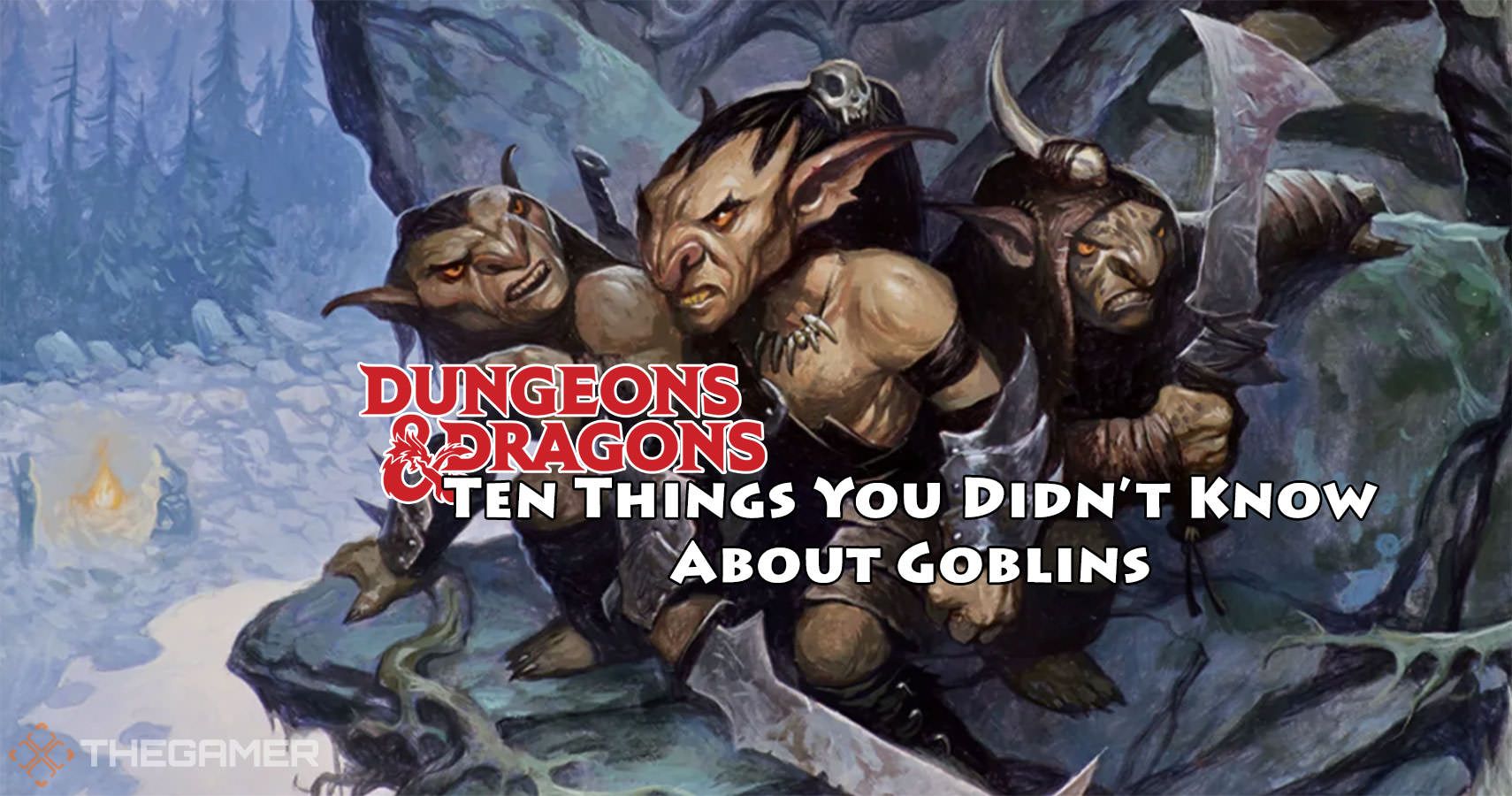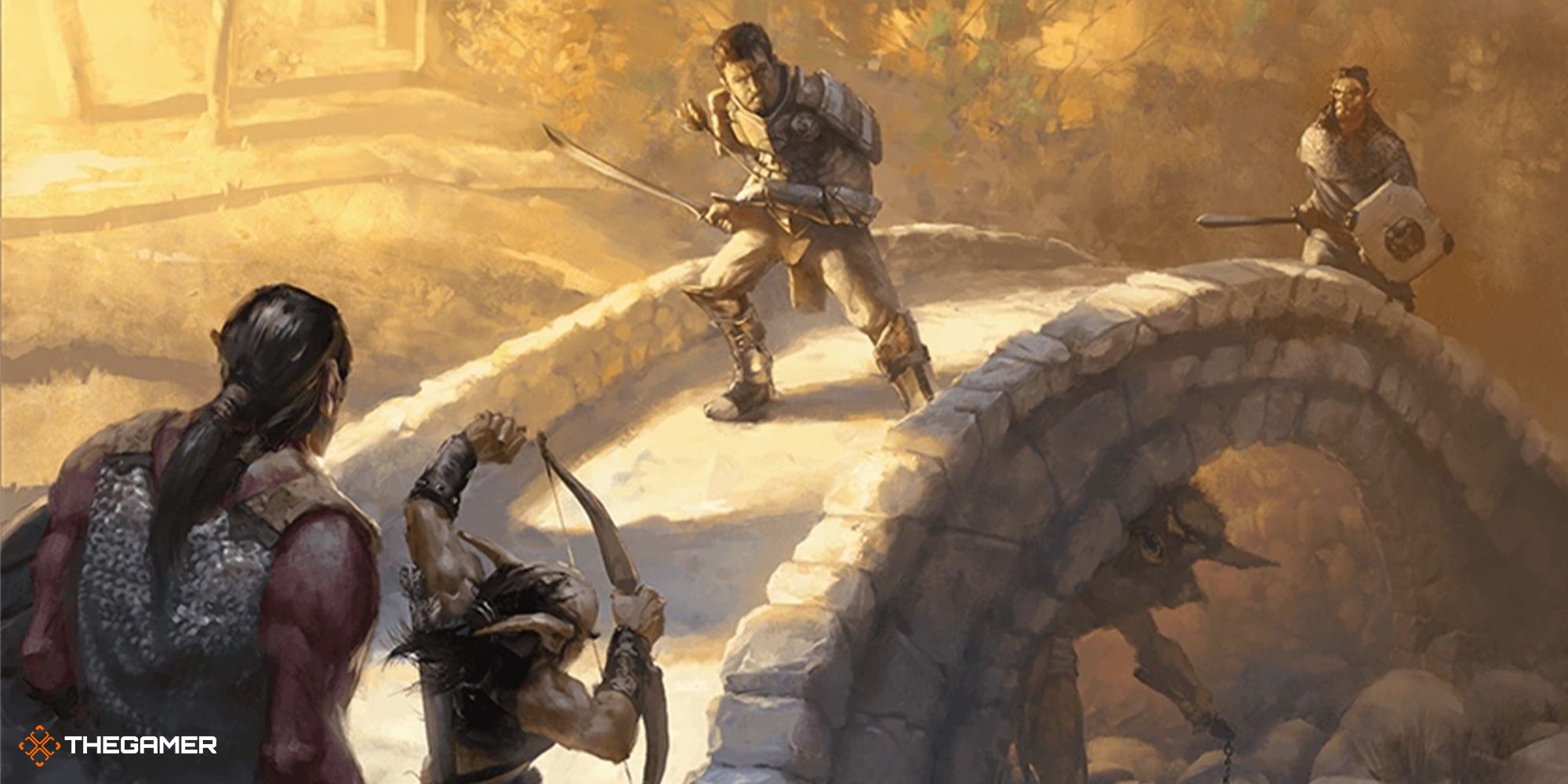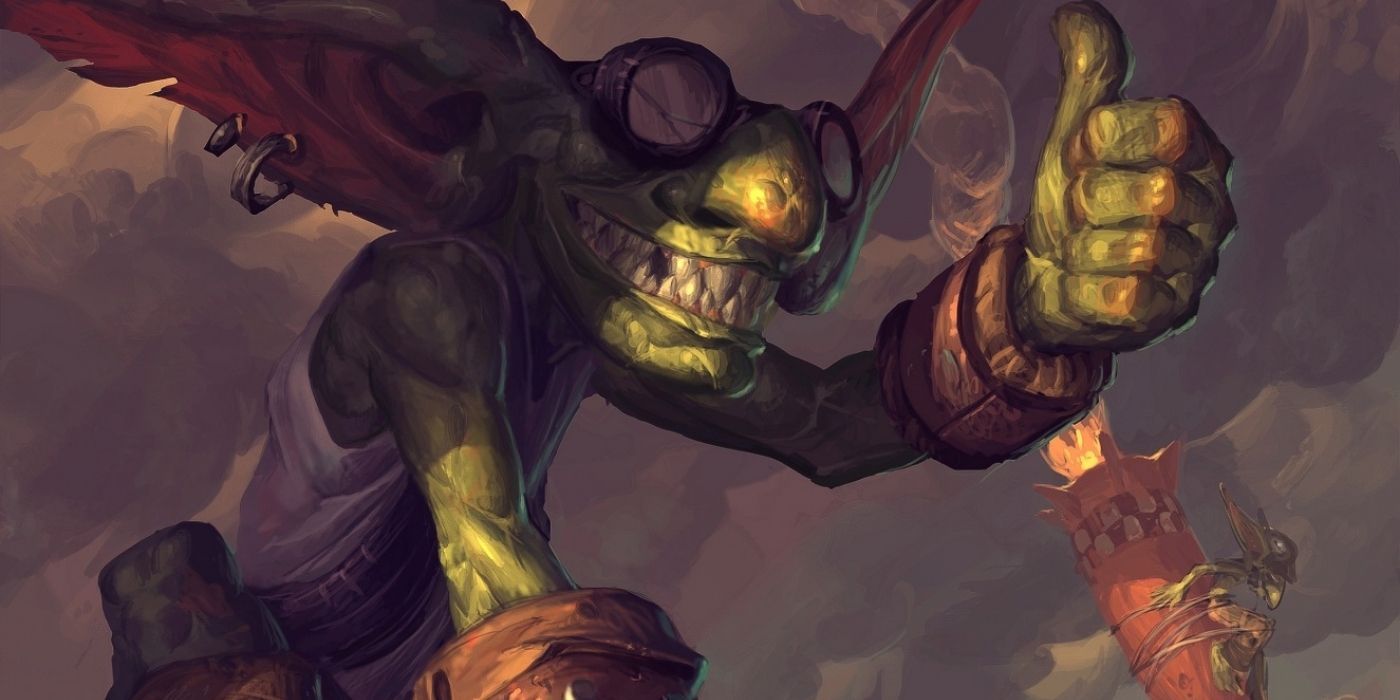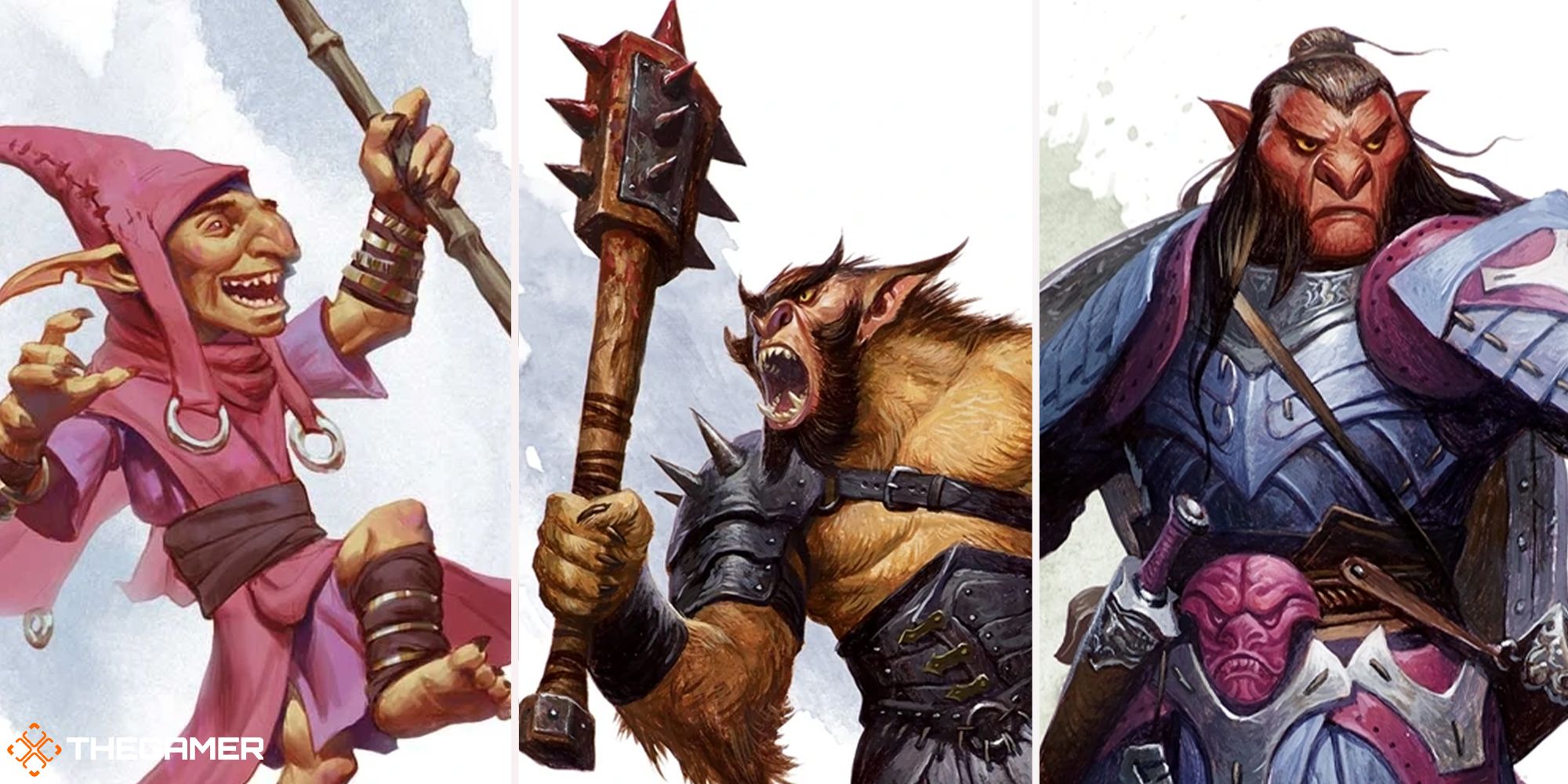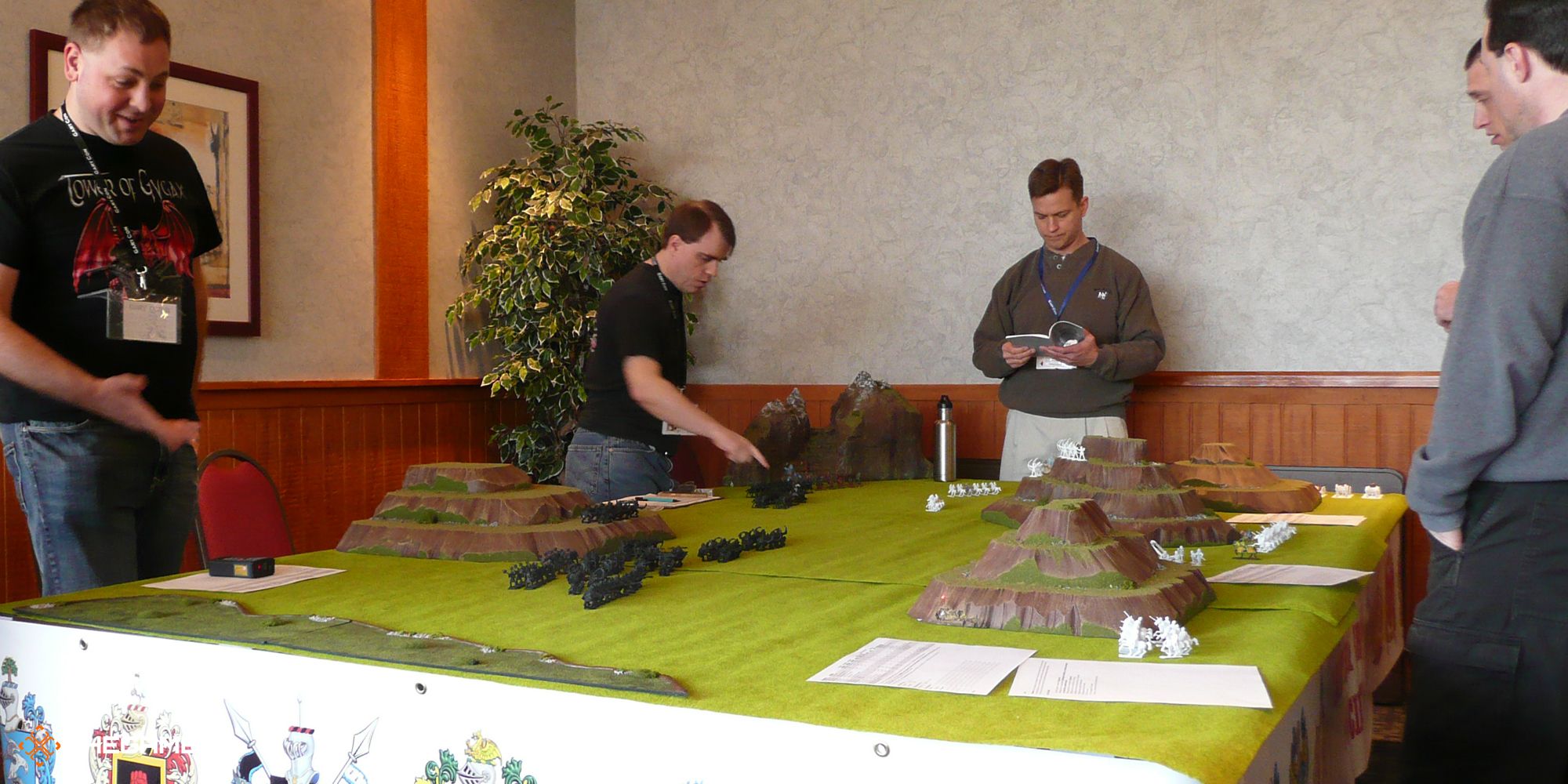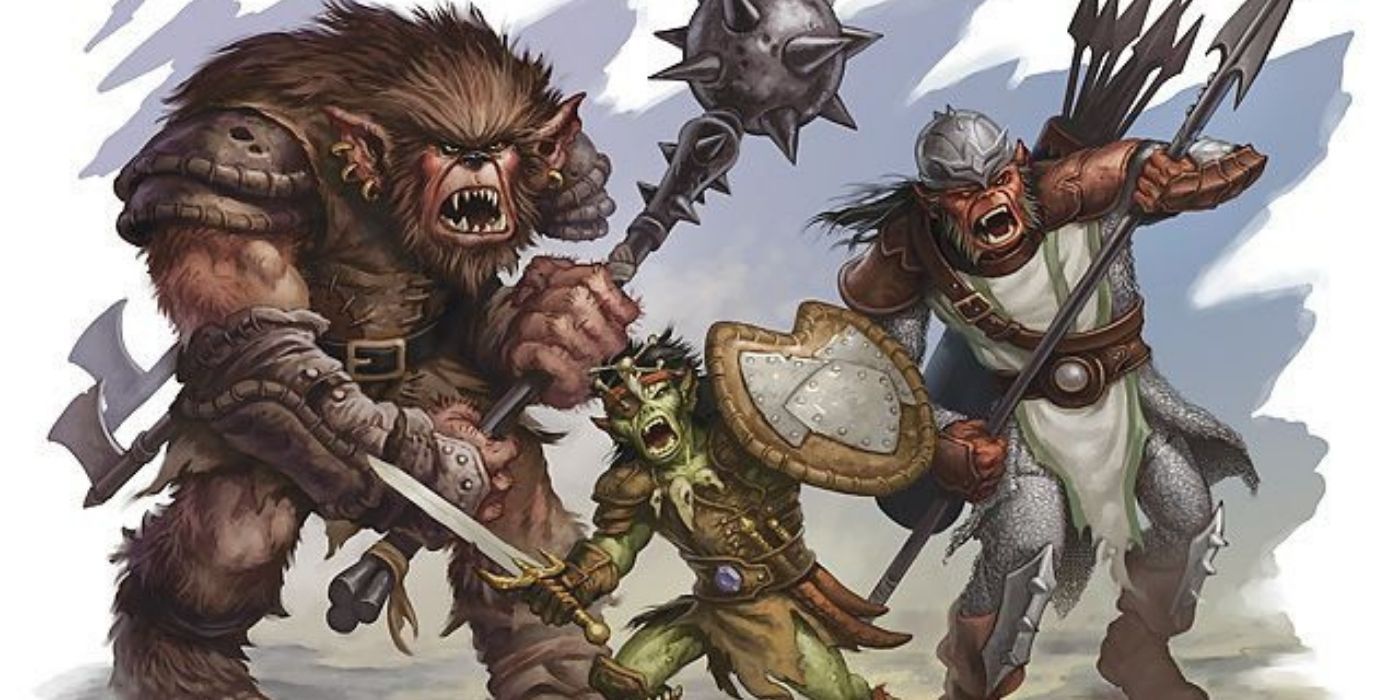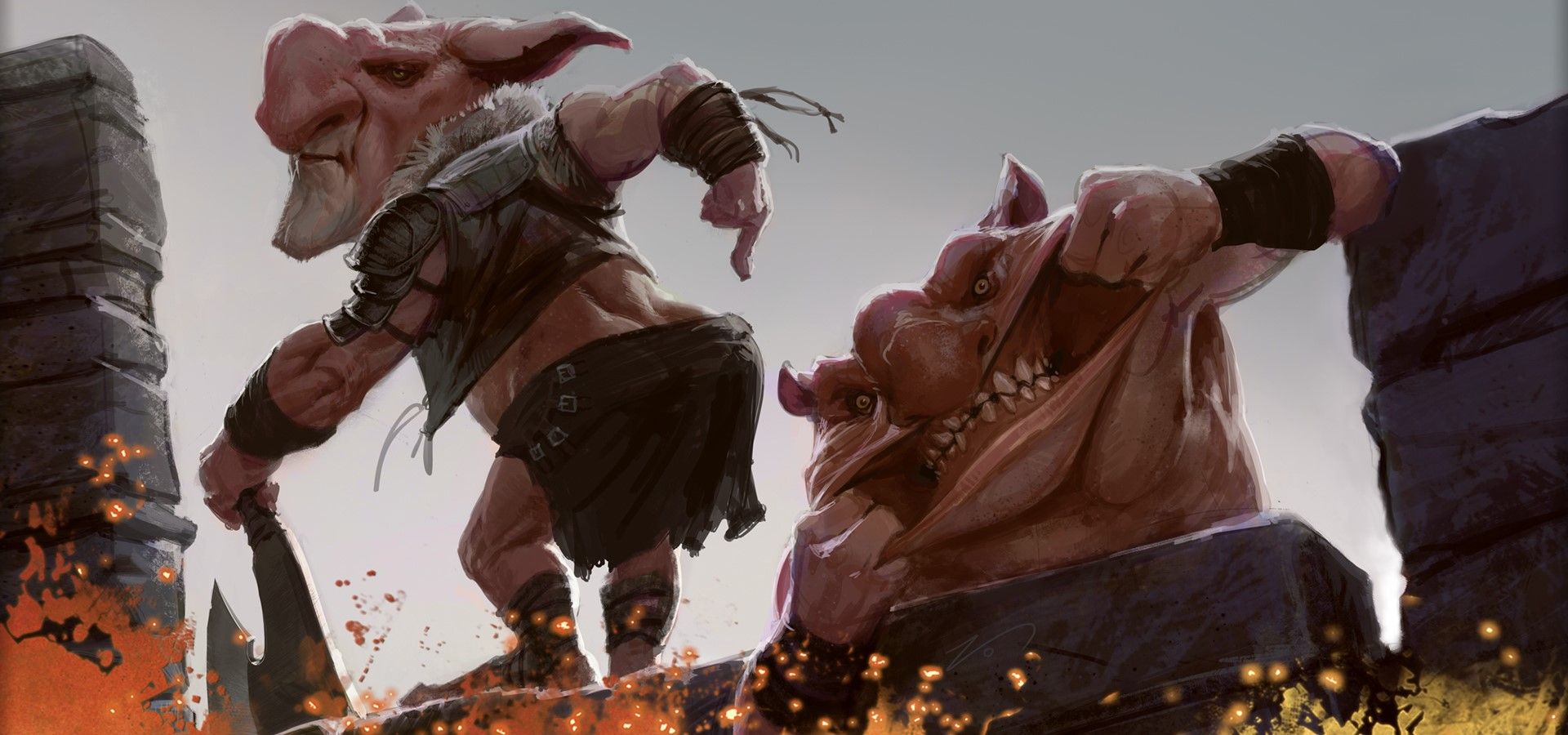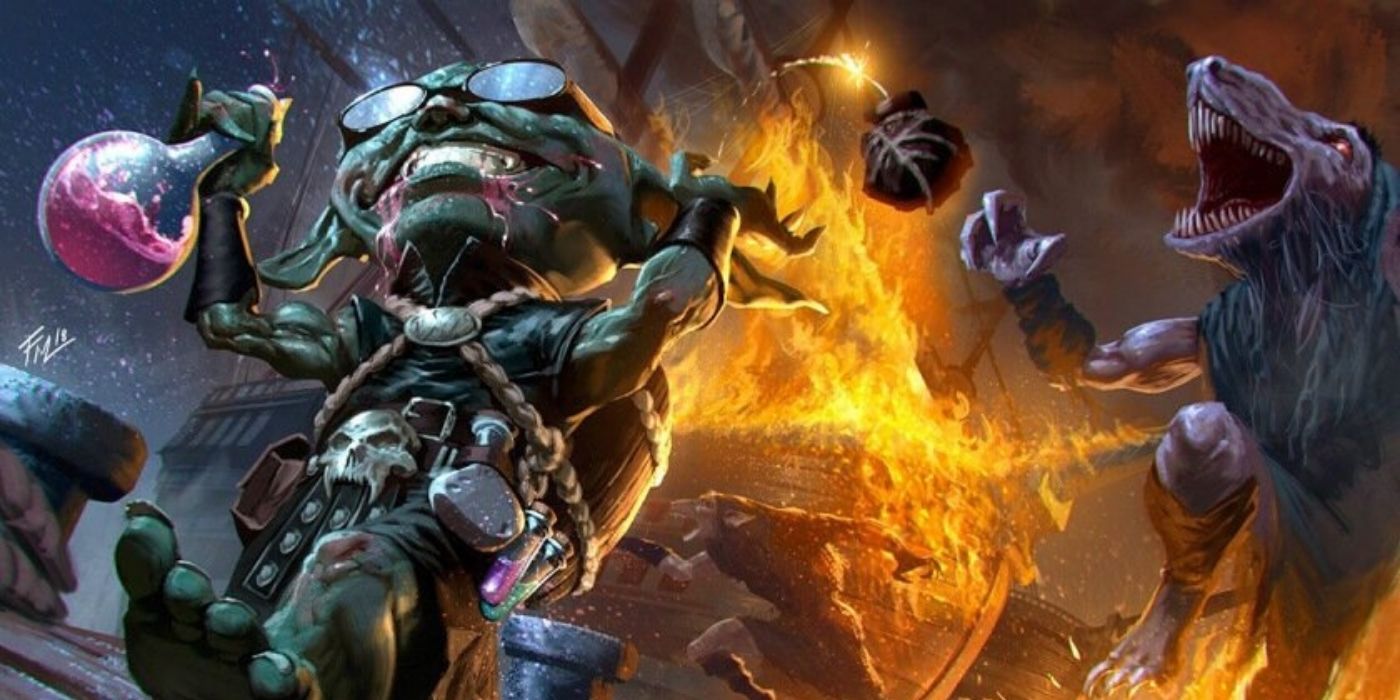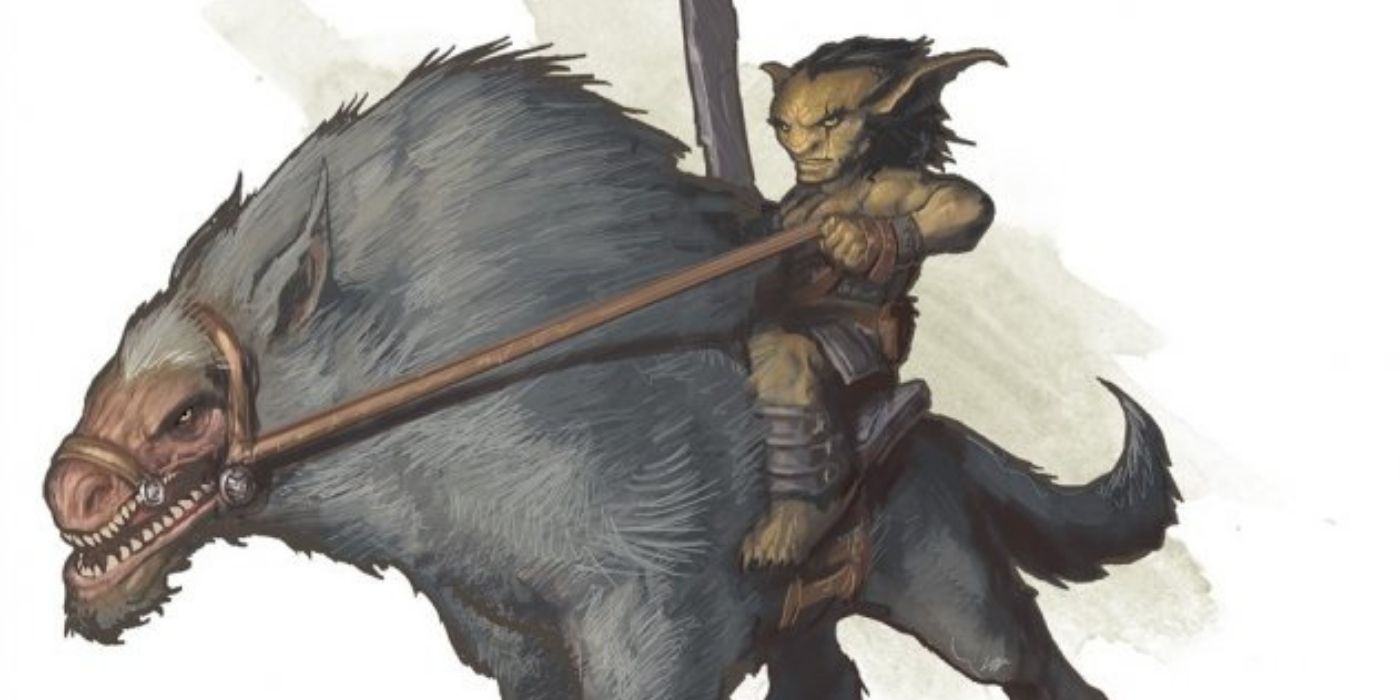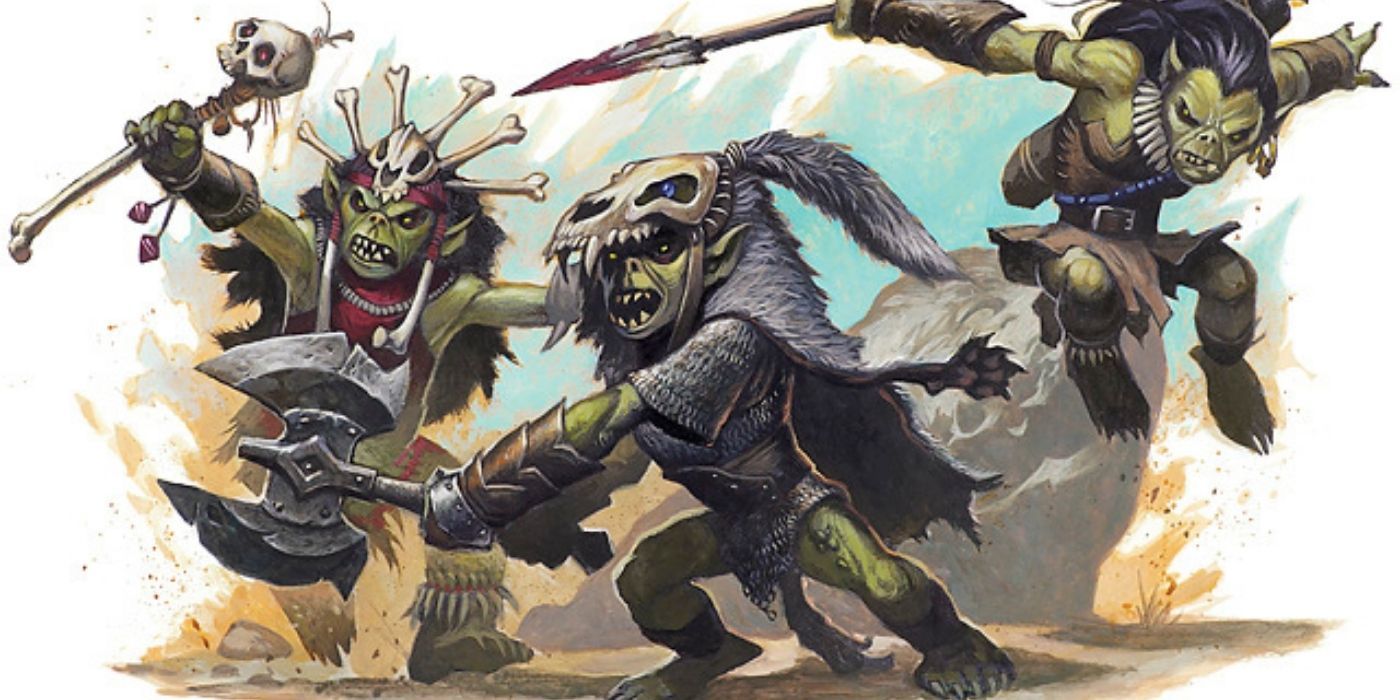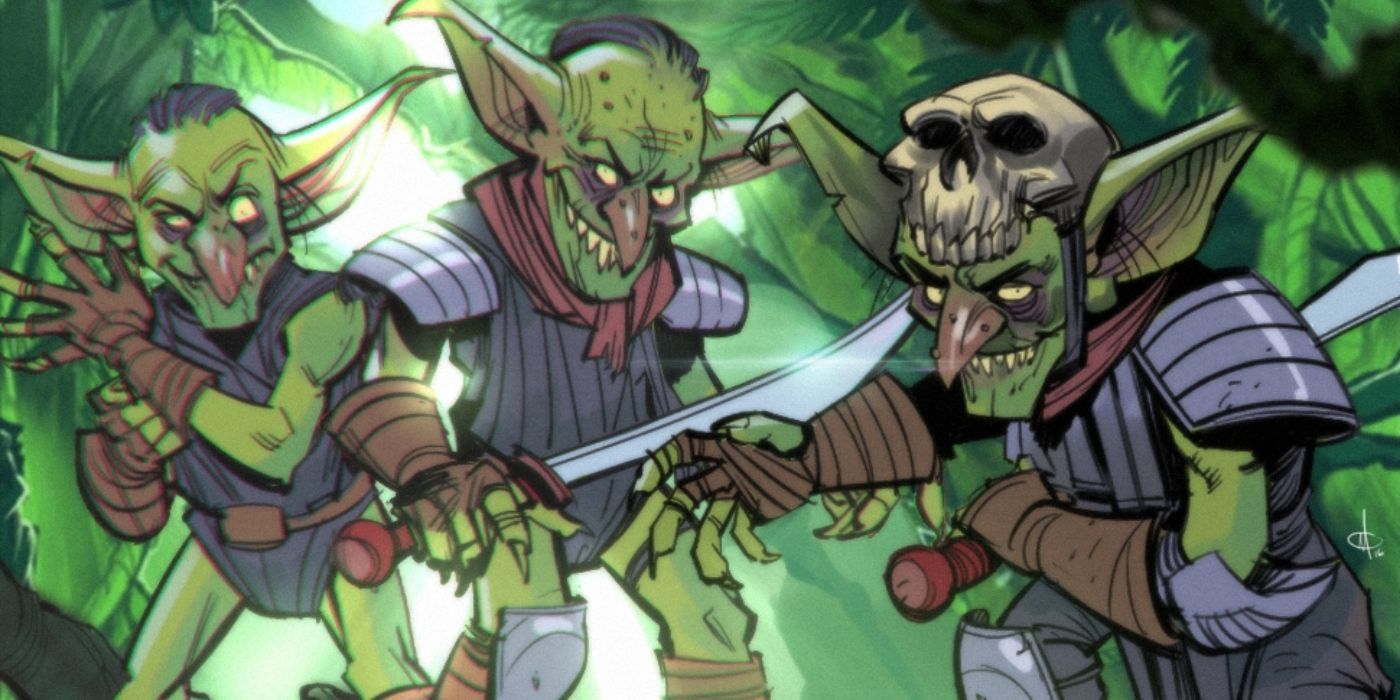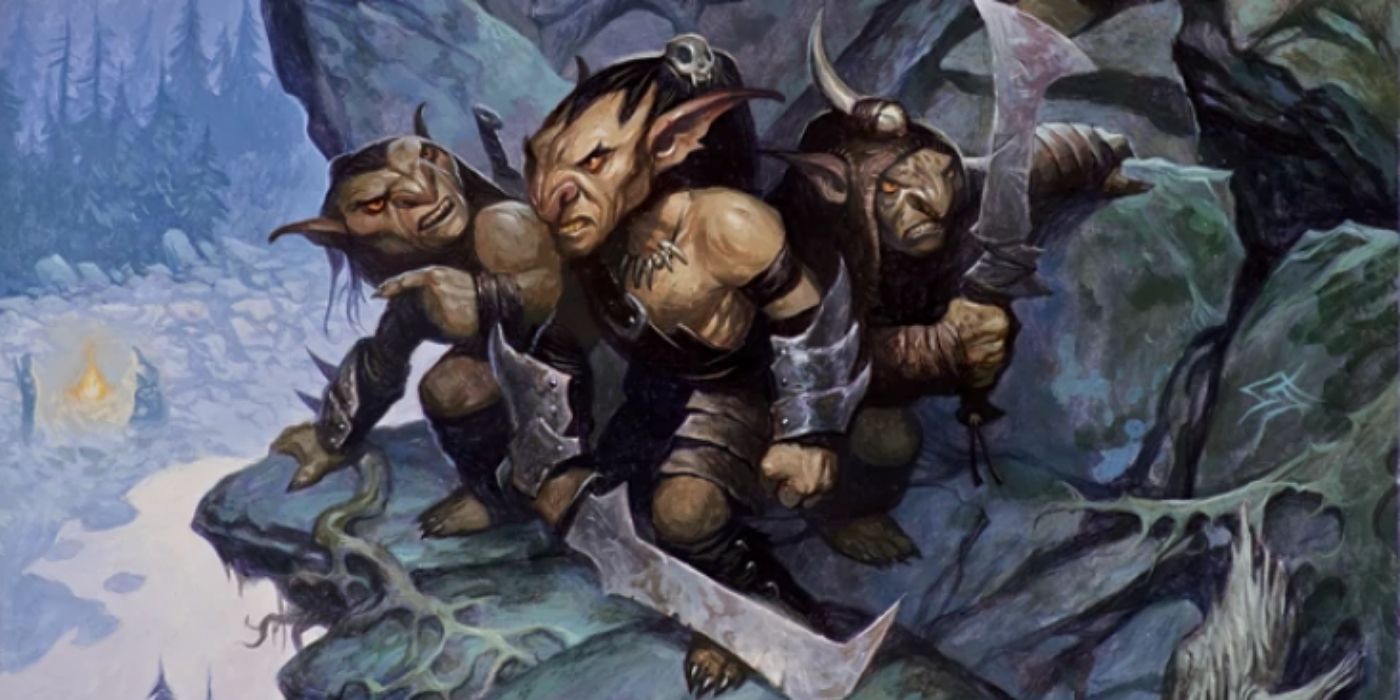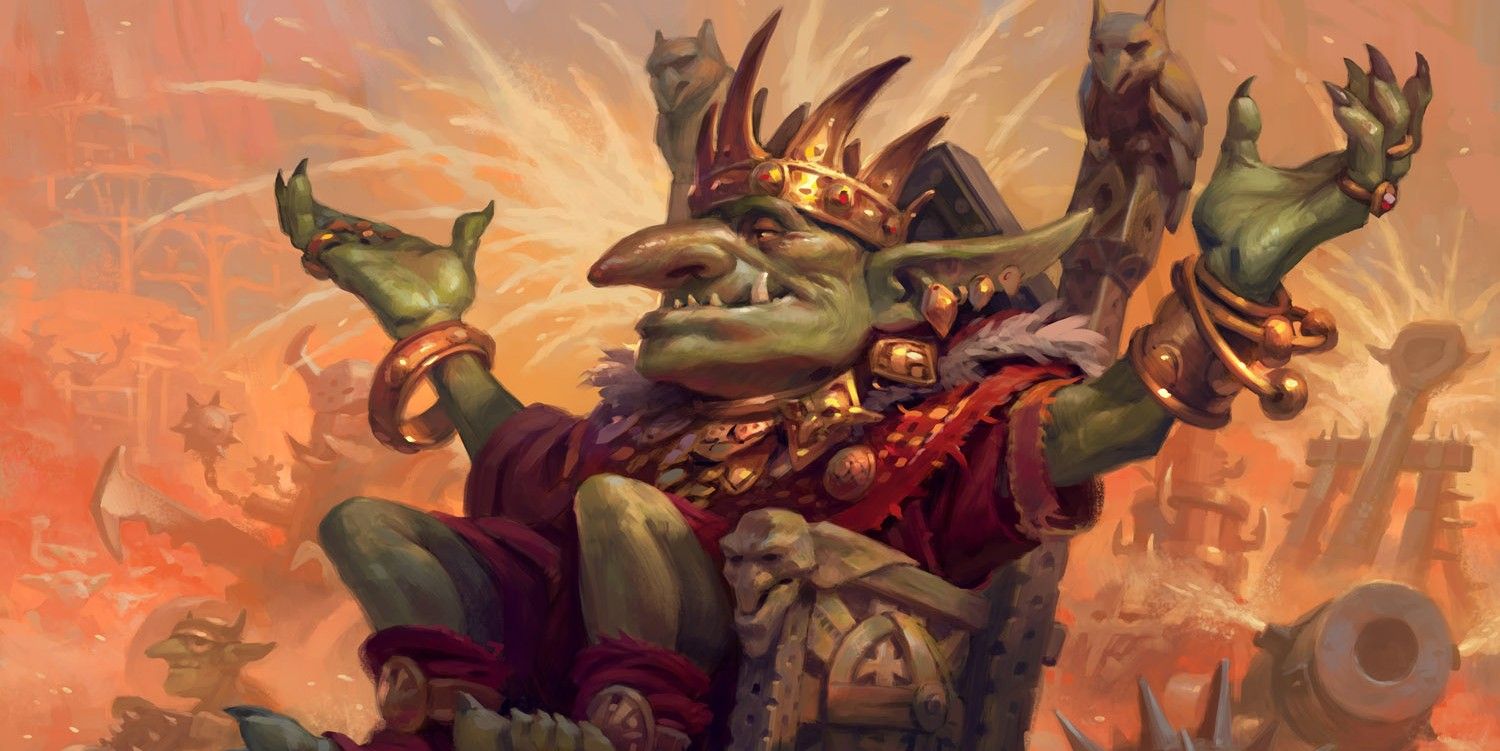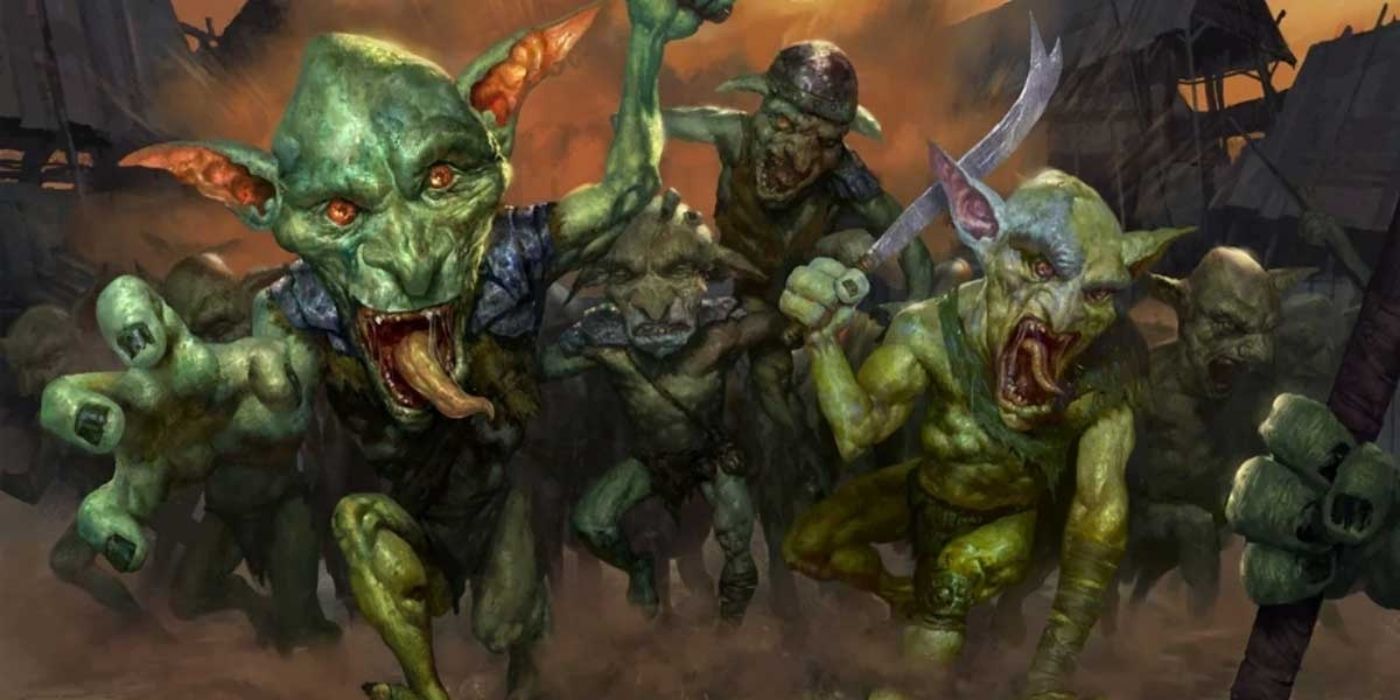Goblins are a race of small, pointy-eared, often green creatures with chaotic natures that are scattered all over fantasy content. They're found as Loot Goblins in Diablo, as creatures in Magic the Gathering, as a playable race in World of Warcraft, and more! In Dungeons and Dragons, playing a Goblin character can allow players and dungeon masters to unleash their crazy side.
Not to mention that players can even recreate their favorite goblins from other series, like Goblin Slayer. As a small race, they can occasionally go unnoticed as a simple throwaway enemy, only good for overwhelming parties with huge numbers. There's actually a lot more lore to discover about these mischievous creatures.
Updated May 30, 2022 by Gabrielle Huston: Dungeons and Dragons just gets more and more popular as more and more people give the game a chance! To get everyone up to speed, we've updated this list to keep you informed about this popular enemy race.
13 They're Not Always Evil (Anymore)
Recently, Wizards of the Coast (the people behind Dungeons and Dragons) has committed to changing some of the races in the game that have been written off, as an entire species, as "evil" in the past and who often perpetuate harmful and racialized stereotypes about real-world peoples. One of the races up for consideration is the Goblins.
We say that the entire species has been written off as evil because it's literally written into the official D&D books: Goblins are a monster type that have the alignment 'Neutral Evil.' And, in case you weren't aware, Goblins as creatures are rooted in a lot of antisemetic stereotypes. Of late, this is something that the Harry Potter franchise and Hogwarts Legacy have been receiving heat for.
12 They May Have Been Created To Be Stealthy
It's common for goblin tribes to be ruled by another race, particularly hobgoblins (small, humanoid creatures which are more intelligent and powerful than goblins but not so much so as to compete with many larger races).
Since it's unclear how goblins were created, it's speculated that they may have actually been created by these hobgoblins to be their slaves and infiltrate spaces more easily. Whether this was done through selective breeding, magic, or by some other means is unclear.
11 There Are 6 Varieties Of Goblins And At Least 17 Kinds Of Goblinoids Altogether
So, Goblins are a particular species with a number of regional varieties. Goblins are part of a larger group, known as Goblinoids, who are all related to one another.
The varities of goblins include...
- Goblins (the basic kind, as long as they don't fit into one of the other varieties, appeared in 1st, 2nd, 3rd, 4th, and 5th editions)
- Bakemono (a slightly larger, more muscular species of Goblins, appeared in 1st, 2nd, and 3rd editions)
- Batiri (jungle goblins, appeared in the 3rd edition)
- Grodd goblin (androgynous, more civilized goblins, appeared in the 3rd edition)
- Nilbog (goblins who were possessed by trickster spirits, appeared in the 1st and 5th editions)
- Dekanter goblin (horned goblins from the Greypeak Mountains, appeared in the 3rd edition)
Other goblinoids include...
- Bugbear (hairy, strong goblins the size of people, appeared in 1st, 2nd, 3rd, 4th, and 5th editions)
- Goblin rat (lycanthropes goblin creatures, appeared in 1st, 2nd, and 3rd editions)
- Half-goblin (creatures born from one goblin parent and one parent of another race, such as human, found in 1st, 2nd, 3rd, 4th, and 5th editions)
- Hobgoblin (human-sized goblin creatures between the strength of regular goblins and bugbears, appeared in 1st, 2nd, 3rd, 4th, and 5th editions)
- Koalinth (undersea hobgoblins, appeared in 1st, 2nd, and 5th editions)
- Norker (small goblins with especially tough skin, appeared in 1st, 2nd, 3rd, 4th, and 5th editions)
- Snow goblin (furry goblins who live in arctic environments, appeared in the 3rd edition)
- Worghest (goblins descended from goblins who bred with barghests, appeared in the 3rd edition)
- Verdan (goblins who continuously mutate over the course of their life, appeared in the 5th edition)
- Varag (feral goblins also known as blood chasers, appeared in the 3rd edition)
- Boggle (trickster fey, appeared in the 1st, 2nd, 3rd, 4th, and 5th editions)
- Gremlin (fey often mistaken for imps, appeared in the 2nd and 4th editions)
10 Before Dungeons & Dragons, They Appeared In Chainmail
Chainmail is an old medieval miniature warfare game that was first released in 1971. Though it wasn't actually Dungeons & Dragons, D&D's creator, Gary Gygax, worked on the rules and it is considered one of D&D's precursors.
Chainmail included lots of fantastical monsters, including Goblins. Goblins have a long, complicated history in European folklore, but this was their very first appearance in anything resembling Dungeons & Dragons. The image above from bander.bramblegrub on flicker shows people playing Chainmail at Gary Con II.
9 Some Goblins Live Peacefully Among Non-Goblins
The goblins were a race that, among others (like Orcs), were considered to be entirely bad. Due to recent backlash from the community about the damaging message it sends to claim an entire race is "bad," as we mentioned, the people behind the game have worked to expand on unique members of the race.
Some of these are the goblins who leave their tribes to live among non-goblin communities. Women often choose to do this because of the strict role they have in goblin society.
8 They Use Tricks Because They're Used To Being The Smallest
Goblins have often been under the control of some other race, hobgoblins or not. As a result, freeing themselves from this slavery meant playing dirty. It's become a staple of their society – the concept of 'fairness' means practically nothing.
They take out their rivals before they become a problem, use tricks and expect their opponents to do the same, and deal in lies as easily as truths. For players or dungeon masters looking to expand their role-playing skills, a goblin with a detailed personality would be a unique challenge.
7 Women Are Expected To Have As Many Children As Possible
Goblin women are expected to spend all their time having as many children as possible. These gender roles evolved as their society became ever more chaotic and violent, meaning goblins died in larger and larger numbers, at younger and younger ages.
If a goblin could ever reach the age to die naturally, it would be somewhere between 40 and 60 years old. Women having children as often as possible allowed the tribe to maintain significant enough numbers to be a threat to potential adversaries.
6 They Work Together With Worgs and Wolves
Since goblins are such a small race, taming, domesticating, working alongside, and fighting with animals are critical skills. To this end, goblins are often seen with worgs and wolves as allies in combat or to patrol their tribe boundaries.
Other than these creatures, goblins generally have poor relations with every other race nearby. They especially hate Tel-quessir, dwarves, and gnomes. They don't even trust other goblinoids (races that are related, distantly or closely, to goblins).
5 They Never Stop Fighting, Even In Death
The main deity which goblins worship is Maglubiyet, the god of war and leadership. They pray to him out of fear, not love or admiration. In death, goblins believe that they will join Maglubiyet's undying army on Acheron (another plane).
It is considered a privilege to be a part of his army, despite the fact that goblins are said to dread this fate. One doesn't need to work hard to understand the goblin's fear of this god; Maglubiyet is depicted as an 11-foot tall goblin (most stand at 4 feet) with void-black skin and flaming eyes.
4 Their Homes Are Called Lairs
Goblins live in temperate areas most of the time, in caves that aren't too far from the surface so that they can emerge easily. In other environments, goblins may burrow deeper. Their homes are accurately called "lairs," and are a disaster by any other race's standards.
They don't bother to maintain these lairs because they often must move so quickly on short notice. It's also because the tribes often have large numbers of goblin children running around, making a mess of everything.
3 Tribes of Goblins Usually Share The Same Skin Colour
When one imagines goblins, they often picture creatures with forest green skin. However, they can actually be any shade of red, orange, yellow, or green. Their eyes may be any of those colors as well, though they are seldom green.
Tribes of goblins tend to share the same color of skin. It's not clear whether this is because they are all exposed to the same light over the generations, because the women breed liberally and one skin color becomes dominant, or for some other reason.
2 Leaders Are The Only Ones To Have Private Rooms
Players who have encountered goblins in their campaign(s) may know that this race sleeps in common spaces, with no sense of privacy or modesty. However, they may not have realized that the leader of a tribe actually sleeps in his own private quarters, separate from the rest.
If a party is clearing out a goblin tribe, they'd best remember to check the side-caverns. That is, of course, if they can handle the stench – living together, practically on top of one another, doesn't make for particularly sanitary living conditions.
1 They May Resort To Cannibalism
Goblin societies don't exactly engage in agriculture or most of the regular ways societies might create food. Instead, they raid neighbors – like other lairs and small human villages – to steal what they can. If the tribe runs out of food, goblins have been known to eat members of other races, and even other goblinoid creatures, like the members of another tribe.
If they weren't interested in eating their captives, goblins put them to work as slaves. Without much security, goblins are constantly trying to provide enough for the tribe's women and children.

